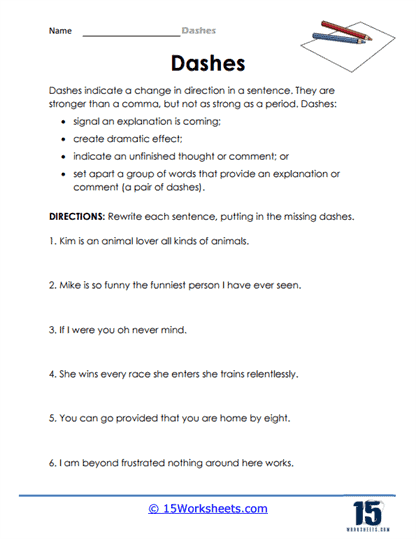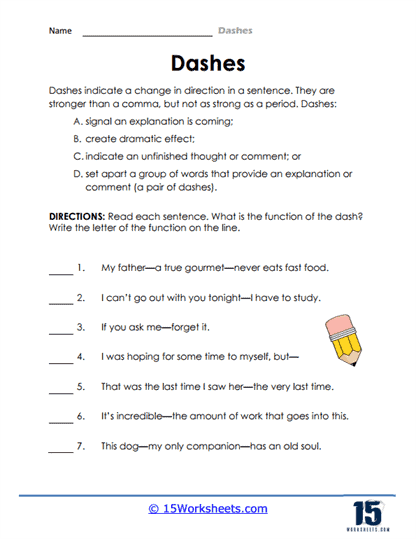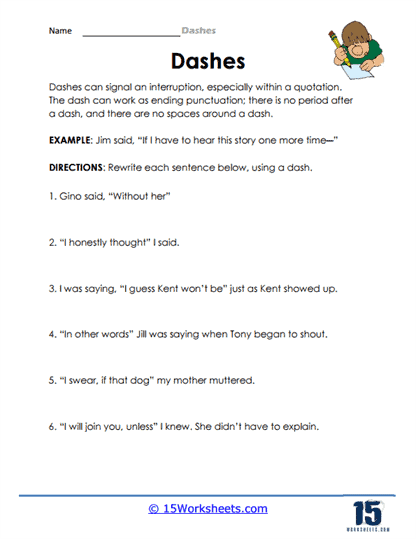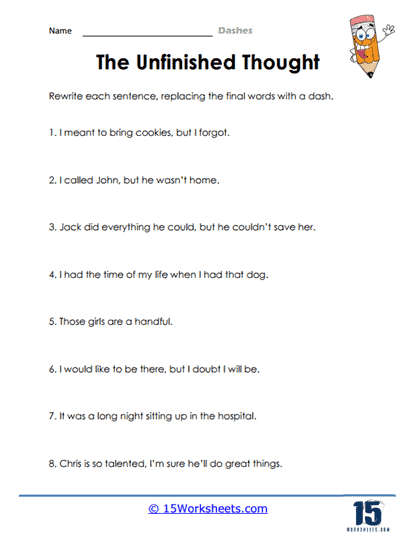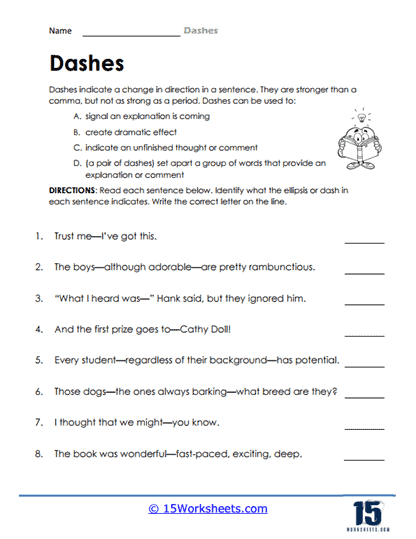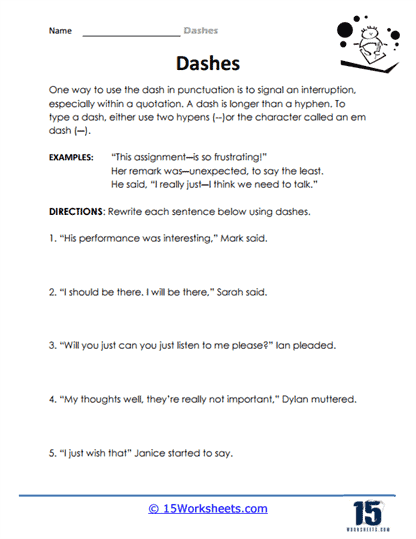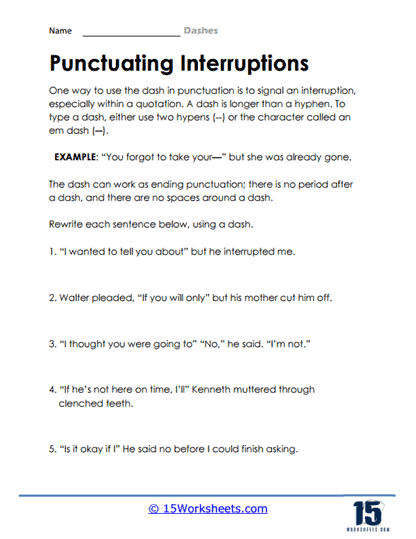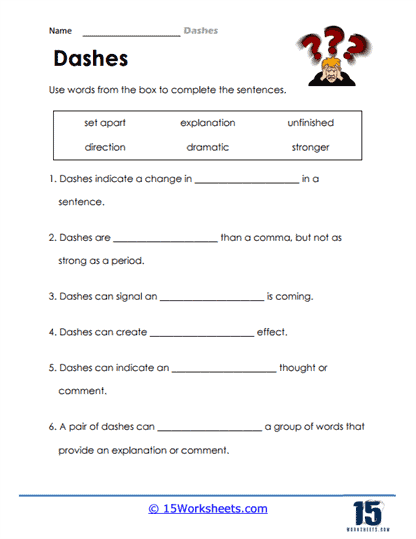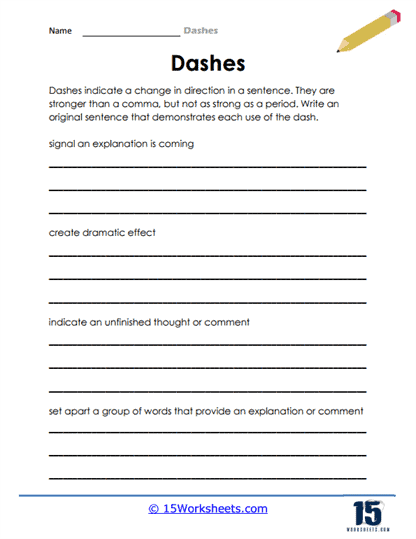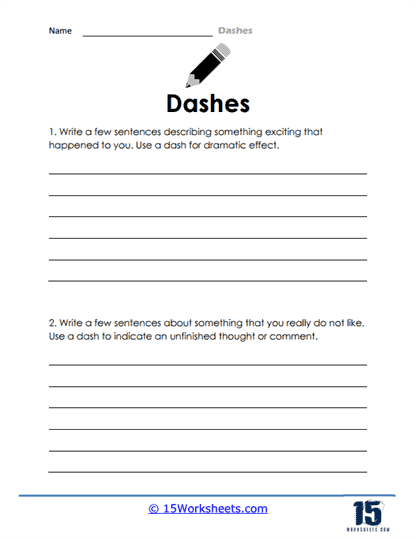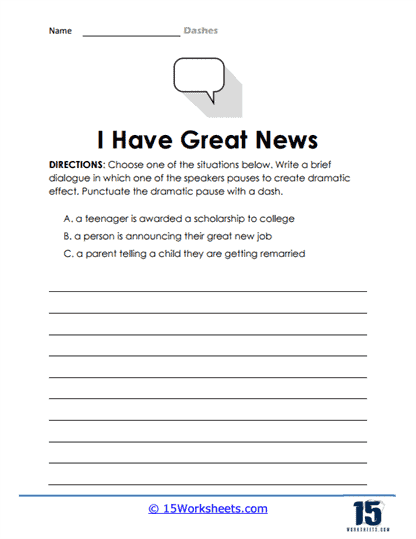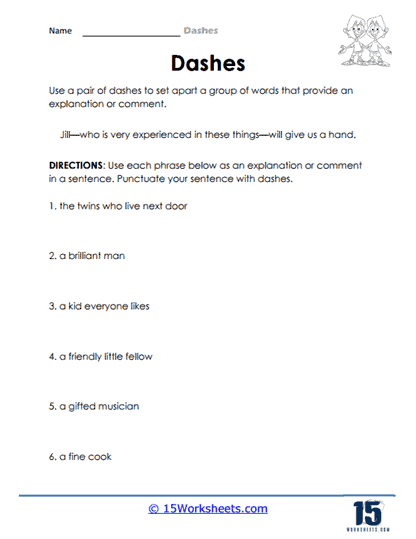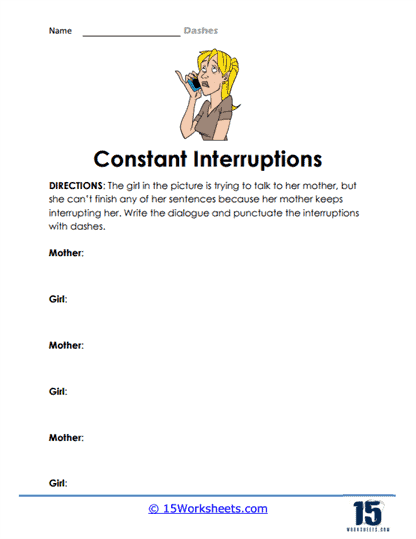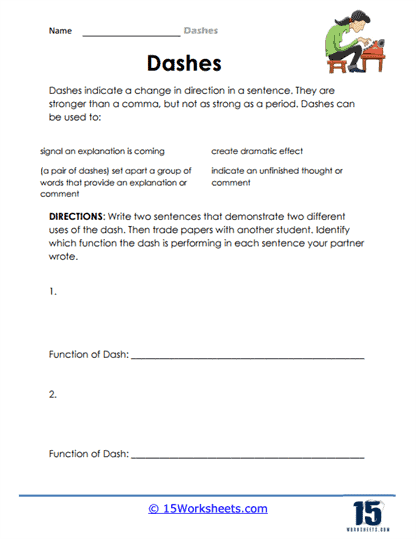Dashes Worksheets
All About These 15 Worksheets
A dash is a punctuation mark used in a sentence, alone or in pairs. A dash can be used when expressing a thought. When a dash is used in a phrase, it is usually more dramatic than using a comma and less theatrical than a parenthesis. A dash can be placed anywhere in a sentence, beginning, middle or end.
The usage of the dash will depend on what you want to emphasize. An important point to note is that if you use a dash in the middle of the sentence, you need to use another one when the emphasized piece of information ends like a parenthesis.
Origins
The term ‘dash’ is derived from the middle English term ‘dasshen,’ derived from the middle French term ‘dachier.’ Dachier means to propel forward. The modern definition of the dash is ‘to break .’This describes the role of a dash when used in syntax.
Why Should You Use a Dash?
There are several reasons you should use dashes in sentences when expressing yourself in written form.
Using a dash, you can provide clarification or an explanation of the material you listed in your sentence.
You can use a dash to list items in your sentence. For example, I bought all the necessary items required – paper, pen, notebook, stationary box- before my first day of school.
You can also use a dash to define a certain term. Homicide – killing one person by another- is a grave crime punishable by imprisonment for long periods.
Dashes are also used to highlight information at the end of sentences. For example, Social media usage has increased substantially – especially in the last few years.
Dashes also indicate a change in the sentences’ tone.
The En Dash (-)
The En Dash is a shorter dash that indicates times, dates, or ranges. It is also used with some compound modifiers. For example:
He worked every day from 8 – 6.
The Exhibition will take place from April 12 – 21.
For this week’s homework, read pages 45 – 56.
They can also be used to show a connection or relationship between two words: Use en dashes to link words that represent a connection, contrast, or relationship.
Example: The New York–London flight was delayed
The Em Dash (—)
The Em dash is a punctuation mark that is used for multiple purposes:
To set off parenthetical information: Use em dashes to enclose a phrase or clause that provides additional information, clarification, or emphasis. Em dashes create a more informal, conversational tone compared to parentheses or commas.
Example: She finally decided on her favorite dessert—chocolate cake—after trying several options.
To indicate an abrupt change in thought, an interruption, or a dramatic pause: Em dashes can be used to break up a sentence and create emphasis or drama.
Example: “I was walking to the store when—oh, I just remembered, I forgot my wallet at home.”
To replace omitted words, letters, or numbers: Em dashes can be used to represent missing or redacted information.
Example: “The suspect’s name—known only to a few—remains undisclosed.”
Also, when using the Em dash, one must be mindful of their writing style. For example, the AP style requires space on both sides of the Em dash, whereas other styles like the MLA and APA don’t require the spaces.
The Em dash can be used in two basic ways in a sentence. It can be used as part of an independent clause and to set off phrases and words.
Remember that spacing around dashes can vary depending on the style guide being followed. The em dash is often used without spaces surrounding it, while the en dash typically has spaces on either side when used to show a connection or relationship between words. However, there should be no spaces around the en dash when it is used to indicate a range of numbers, dates, or times. Always consult the style guide relevant to your writing to ensure proper usage.

